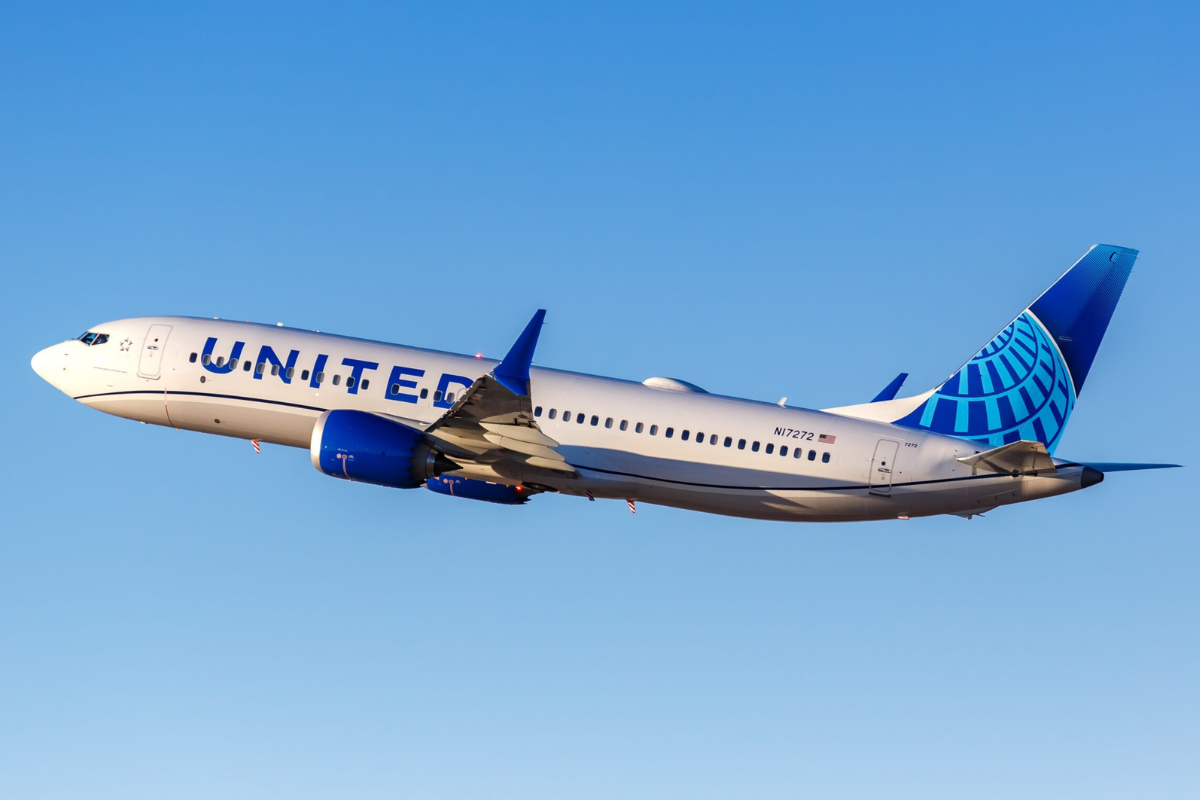
The National Transportation Safety Board (NTSB) has issued an urgent safety alert for a rudder system fitted to Boeing 737MAX planes after the rudder pedals on a four-year-old United Airlines Boeing 737MAX-8 became briefly stuck as the pilots attempted to land the jet at Newark Airport in February.
The rudder pedals are positioned close to the feet of the pilots and, as the name suggests, are used to control the aircraft rudder. By pressing on the left rudder pedal, the rudder moves to the left and pressing down on the right rudder pedal moves the rudder to the right.
When a plane is coming into land, the rudder pedals are used to keep the aircraft on the centerline on the runway by controlling the plane’s yaw motion.
During United Airlines flight UA1539 from Nassau, Bahamas, on February 6, the Captain reported that the rudder pedals were ‘stuck’ when he pushed down to control the position of the rudder, and they were forced to use nosewheel steering tiller to keep the aeroplane near the runway centerline.
The Captain asked the First Officer to test their rudder pedals and he also reported that the pedals were stuck in the neutral position. A short time later, the pedals started to work as expected.
The NTSB launched an investigation into the incident which focused on one of the rudder control components called a rollout guidance actuator.
Accident investigators tested the rollout guidance actuator involved in the United Airlines incident alongside an identical unit from another airplane. In cold environment testing, the NTSB discovered that the function of both actuators were “significantly compromised”.
When investigators took a closer look at the actuators, they found that moisture had seeped into the components, which resulted in the failed testing. The manufacturer, Collins Aerospace, later determined that a sealed bearing had been incorrectly assembled which could lead to moisture getting into the component and then freezing.
The NTSB says that 353 actuators had been delivered to Boeing since 2017 with the faulty bearing, although US-based carriers have already replaced affected rudder systems. It’s not known, however, how many faulty actuators are still in service around the world.
Along with a recommendation for airlines to urgently replace the faulty actuators, the NTSB has also criticized Boeing over the aircraft manufacturer’s recommended actions to deal with a jammed or restricted rudder.
Boeing currently tells pilots to overpower a jammed rudder by using ‘maximum force,’ but the NTSB fears that this recommended course of action could cause a “sudden, large, and undesired rudder deflection that could unintentionally cause loss of control or departure from a runway.”
A preliminary report into the United Airlines incident was published in March but the NTSB says that the investigation is still ongoing.
Mateusz Maszczynski honed his skills as an international flight attendant at the most prominent airline in the Middle East and has been flying ever since... most recently for a well known European airline. Matt is passionate about the aviation industry and has become an expert in passenger experience and human-centric stories. Always keeping an ear close to the ground, Matt's industry insights, analysis and news coverage is frequently relied upon by some of the biggest names in journalism.








Moisture into a component is what caused the elevator of a Delta L1011 flying SAN-LAX in 1978 to get stuck in the up position. Required heroics from the pilots to avert a crash and ultimately resulted in some hurried modifications from the manufacturers.